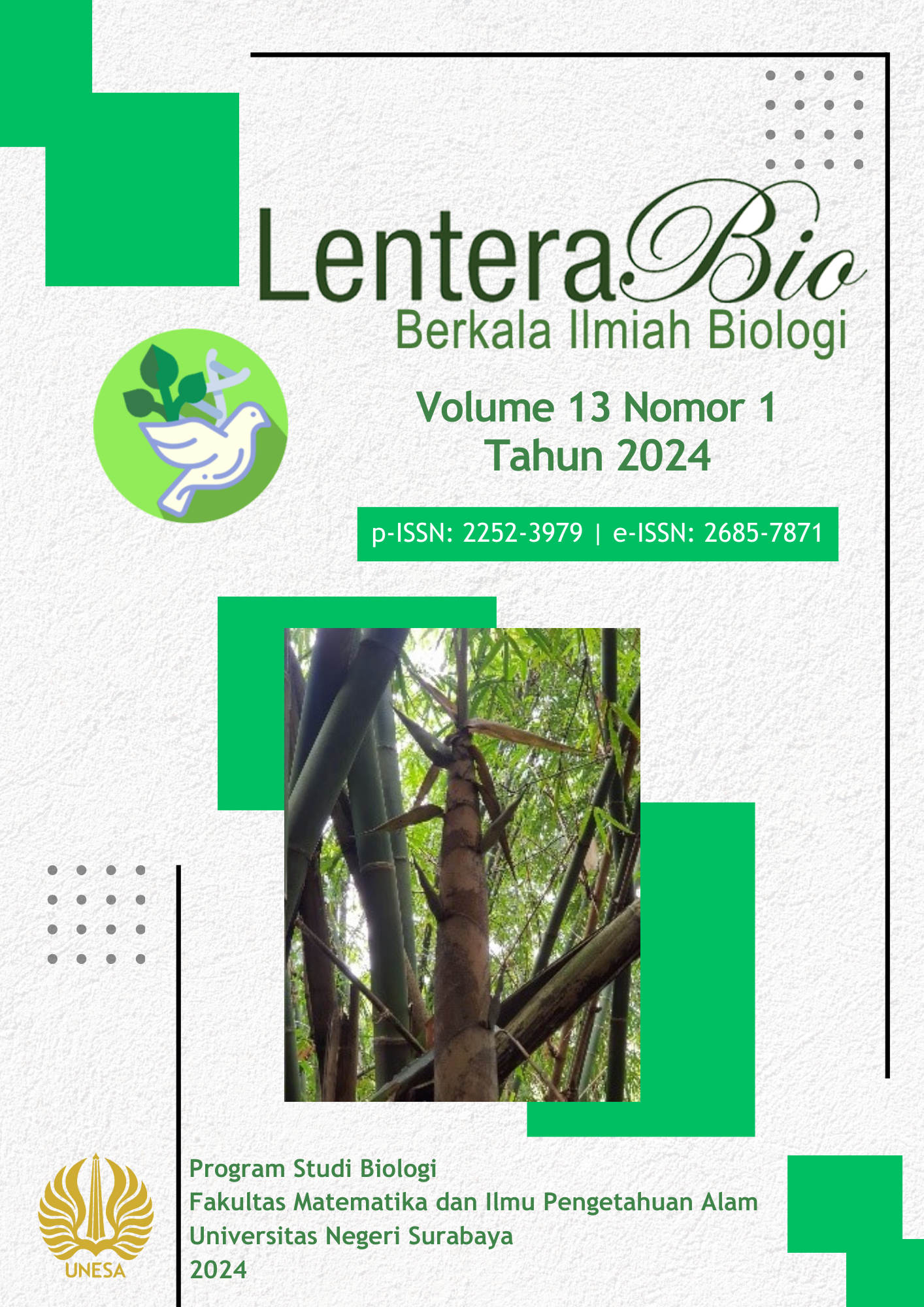Optimization of Nested PCR Method for Vibrio parahaemolyticus AHPND Detection in Vannamei Shrimp (Litopenaeus vannamei)
DOI:
https://doi.org/10.26740/lenterabio.v13n1.p1-13Keywords:
AP4 nested PCR, primer concentration, annealing temperature, Acute Hepatopancreatic Necrosis DiseaseAbstract
Vannamei shrimp culture has a high risk of contracting diseases, one of which is Acute Hepatopancreatic Necrosis Disease (AHPND) caused by Vibrio parahaemolyticus strain AHPND. This disease is highly contagious and has a mortality rate of up to 100%. Early detection is needed to predict deployment and reduce the risk of production failure. Detection can be carried out using the AP4 nested PCR method, but many PCR results are not optimal, so it is necessary to optimize the method. The purpose of this study was to determine the optimal primer concentration and annealing temperature of AP4 nested PCR method. The steps of the research included DNA extraction, amplification, and electrophoresis. In the amplification, optimization of primer concentration (2.5 μM, 5 μM, and 10 μM ) and annealing temperature (53°C, 58°C, and 63°C) was carried out. The amplification results for each treatment obtained a band of 230 bp, no smears, primer dimers and mispriming, but had different thickness variations. At annealing temperature of 58°C and primer concentration of 5 μM, the best results were obtained in the form of the thickest and single band compared to the other treatments. In conclusion based on these results that the best optimization method is using an annealing temperature of 58°C and 5 μM of primer concentration.
Downloads
Published
How to Cite
Issue
Section
License
Copyright (c) 2023 LenteraBio : Berkala Ilmiah Biologi

This work is licensed under a Creative Commons Attribution-NonCommercial 4.0 International License.
Hak Cipta (c) LenteraBio: Berkala Ilmiah Biologi
Karya ini dilisensikan di bawah Lisensi Internasional Creative Commons Attribution-NonCommercial 4.0.
Pemberitahuan Hak Cipta.
Hak cipta dari artikel yang diterima untuk diterbitkan akan diberikan kepada jurnal sebagai penerbit jurnal. Hak cipta yang dimaksud meliputi hak untuk menerbitkan artikel dalam berbagai bentuk (termasuk cetak ulang). Jurnal mempertahankan hak penerbitan atas artikel yang diterbitkan.
 Abstract views: 3314
,
Abstract views: 3314
, PDF Downloads: 11173
PDF Downloads: 11173











